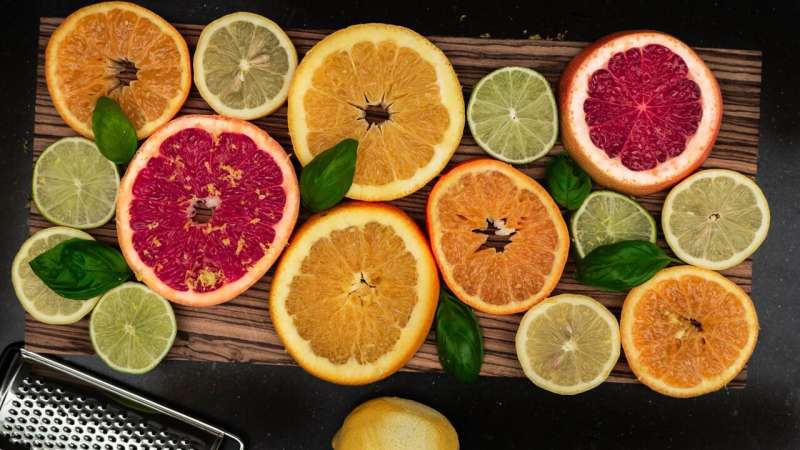This article has been reviewed according to Science X's editorial process and policies. Editors have highlighted the following attributes while ensuring the content's credibility:
fact-checked
trusted source
proofread
Examining the potential of bioflavonoids as SARS-CoV-2 inhibitors

Research in the International Journal of Computational Biology and Drug Design, has looked at the potential of various bioflavonoids as inhibitors of the SARS-CoV-2 virus, which causes COVID-19. The compounds—narirutin, naringin, neohesperidin and hesperidin—are found in citrus fruits. Their wide-ranging therapeutic and physiological effects are well known. The possibility of repurposing them in the face of the ongoing pandemic is discussed in light of computer modeling of their interaction with the virus' infamous spike protein.
The SARS-CoV-2 virus enters our cells by using a protein called S-protein to interact with a human protein called angiotensin converting enzyme 2, ACE2, present on the surface of our cells. Antiviral drugs that block this mechanism would effectively stop the virus in its tracks. However, finding safe, new antiviral agents is difficult, much better to test a well-known drug or compound and repurpose it for this disease.
Pawan Gupta of the Shri Vile Parle Kelavani Mandals Institute of Pharmacy in Dhule, India, and colleagues have used a computer simulation of the systems to test whether various plant-derived molecules would dock with ACE2 and block entry of the virus. They have found that two of the four molecules tested, naringin and narirutin, can bind to both the S-protein/ACE2 interface and the active site of the S-protein. This means that these natural molecules have the potential to prevent the virus from entering human cells and so might be used to develop treatments for COVID-19.
The COVID-19 pandemic has raged since early 2020, although the first of its victims were identified in China in late 2019. While preventative measures and vaccines have all been developed to help us cope with this emergent disease, there remains a need for treatments for those who do catch the potentially lethal disease. Repurposing could allow the rapid development and subsequent approval of antiviral agents given that many of the early-stage toxicity checks and safety trials will already have been undertaken for the use of such compounds in other health contexts.
Of course, the current work was done on a computer, "in silico," the next step will be to determine whether the two active, lead compounds can work in the laboratory, "in vitro," and then "in vivo" in patients. The team also suggests that the kind of multi-targeting they have demonstrated so far in silico might be seen with other compounds, which could also be used as leads to novel antiviral compounds to tackle COVID-19.
More information: Vishnu Sharma et al, In silico phytochemical repurposing of natural molecules as entry inhibitors against RBD of the spike protein of SARS-CoV-2 using molecular docking studies, International Journal of Computational Biology and Drug Design (2023). DOI: 10.1504/IJCBDD.2022.10053912
Provided by Inderscience




















